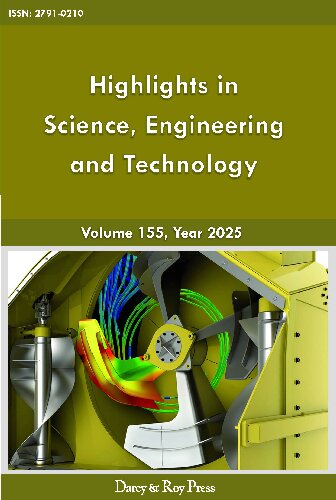Prediction Of Medals Based on Machine Learning and OLS Statistical Regression Models
DOI:
https://doi.org/10.54097/t1y0sr63Keywords:
Olympic Games; Medal Prediction; Machine Learning Models; OLS Statistical Regression Model.Abstract
This paper constructs a predictive model that integrates variables such as the number of athletes and the growth rate of medals. It employs regression and classification techniques from the field of machine learning, utilizing algorithms including Random Forests, Support Vector Machines, and Logistic Regression and the performance of random forest in the last three Olympic Games was compared to determine the optimal performance of random forest in the classification task. Additionally, it applies Bayesian Change Point Detection and Ordinary Least Squares statistical regression models to analyze the performance trajectories of the Chinese women’s volleyball team, the United States women's volleyball team, and the Romanian gymnastics team. Based on the data predicted by the model, the study proposes to increase investment in sports science research, attract talent, strengthen logistical support, and develop special policies. At the same time, error analysis and sensitivity analysis were carried out in this study, and the limitations in the data and model and the sensitivity of the model to certain features were pointed out.
Downloads
References
[1] Olympic Games - Summer, Winter Olympics, YOG & Paralympics, https://www.olympics.com/en/olympic-games
[2] Olympic Sports, https://la28.org/en/games-plan/olympics.html#la28-main-footer
[3] IOlympic Results, Gold Medalists and Official Records, https://www.olympics.com/en/olympic-games/olympic-results
[4] Cao Ziyang, Wu Zhifeng, Kuang Yaoqiu, et al. Calibration and Application of DMSP/OLS Nighttime Light Imagery in the China Region [J]. Journal of Geo-Information Science, 2015, 17(09): 1092-1102.Olympic Results, Gold Medalists and Official Records, https://www.olympics.com/en/olympic-games/olympic-results
[5] Liu Huajun, Du Guangjie. Regional Disparities in China's Economic Development and Test of Stochastic Convergence: Based on DMSP/OLS Nighttime Light Data from 2000 to 2013 [J]. The Journal of Quantitative & Technical Economics, 2017, 34(10): 43-59. You Ning, Han Libo, Li Shiqiang, et al. Per Capita Energy Consumption Carbon Emissions in the Urban Agglomeration of Central Yunnan Based on DMSP/OLS-NPP/VIIRS Nighttime Light Data [J]. Journal of Lanzhou University (Natural Sciences), 2024, 60(06): 764-772+781.Chen Yongtao, Guo Xiaoying, Tao Huijie. A Brief Discussion on the Current Research Status and Development Trends of Machine Learning [J]. China New Telecommunications, 2018, 20(08): 173.
[6] Zou Huadong. On-line Optical Inspection of PCB Hole Information Based on Machine Learning[J]. Journal of Liaoning Technical University (Natural Science Edition), 2012, 31(01): 93-97.
[7] Wang Qi, Tan Juan. Optical ultra-precision detection technology based on artificial intelligence technology [J]. Laser Magazine, 2021, 42(02):156-160BERNARD A B, BUSSE M R. Who wins the Olympic Games: Economic resources and medal totals[J]. Review of Economics and Statistics, 2004,86(1): 413-417
Downloads
Published
Issue
Section
License
Copyright (c) 2025 Highlights in Science, Engineering and Technology

This work is licensed under a Creative Commons Attribution-NonCommercial 4.0 International License.


















